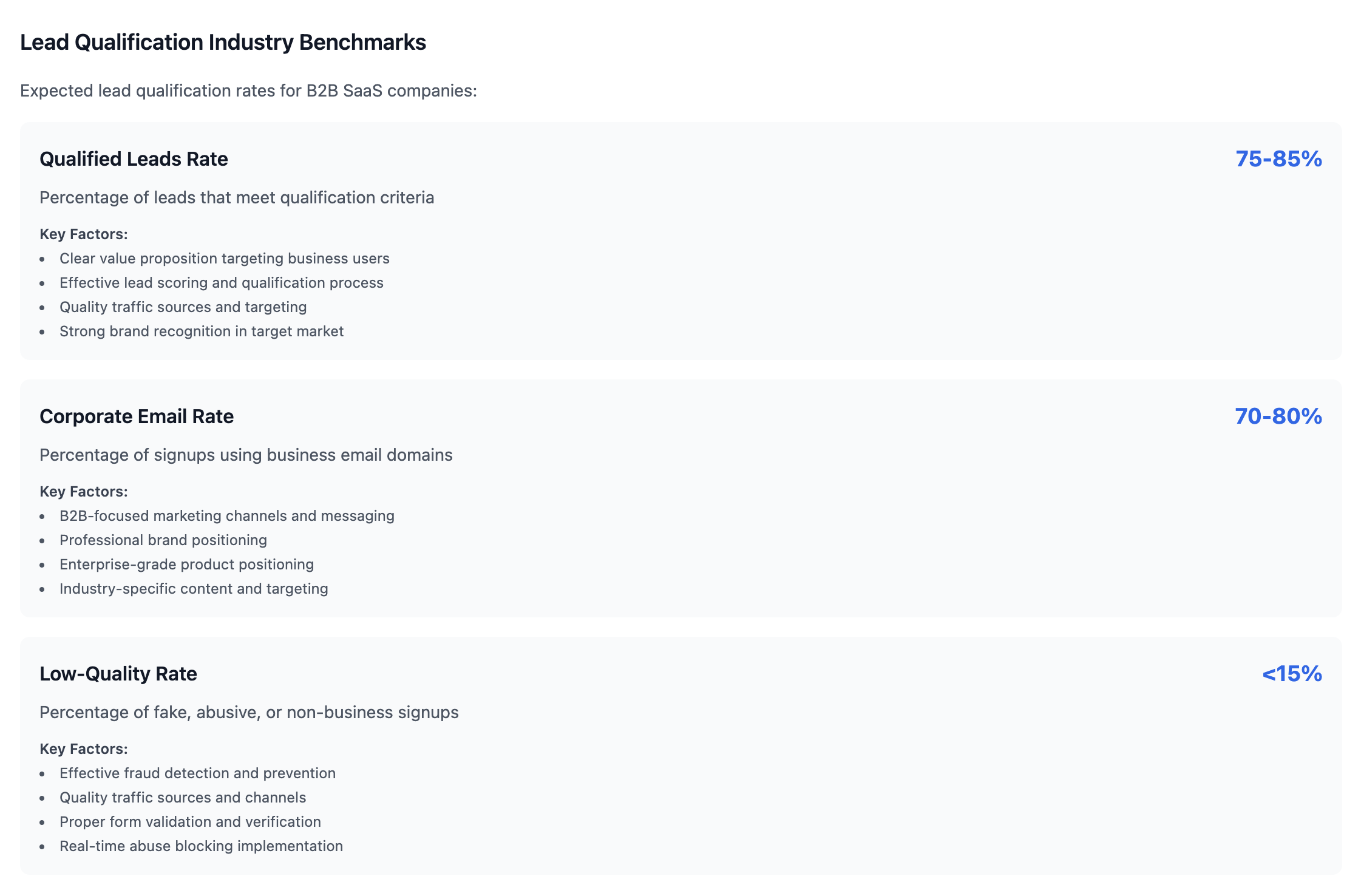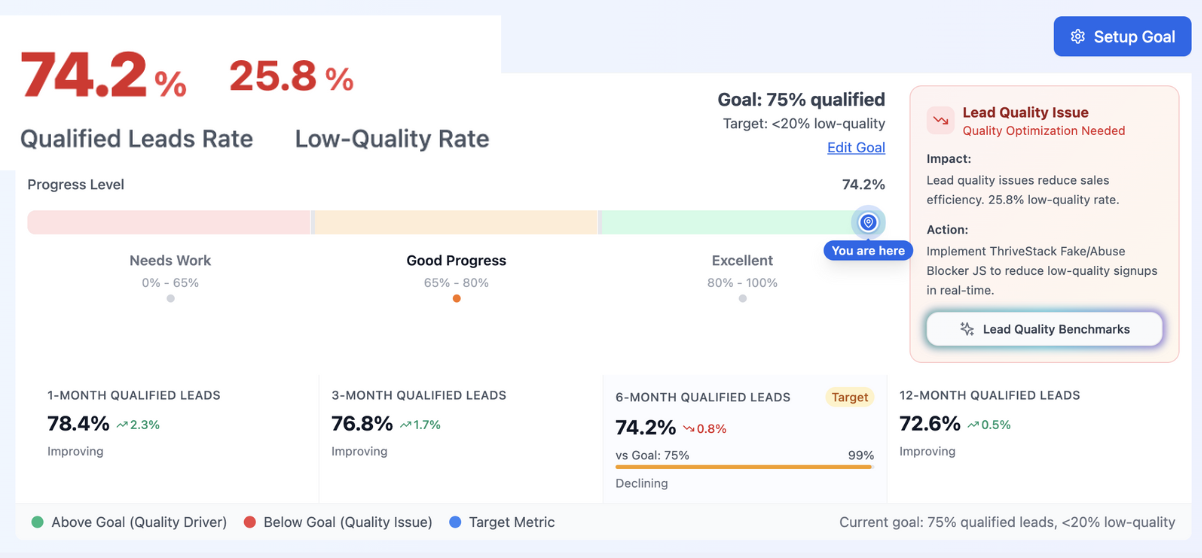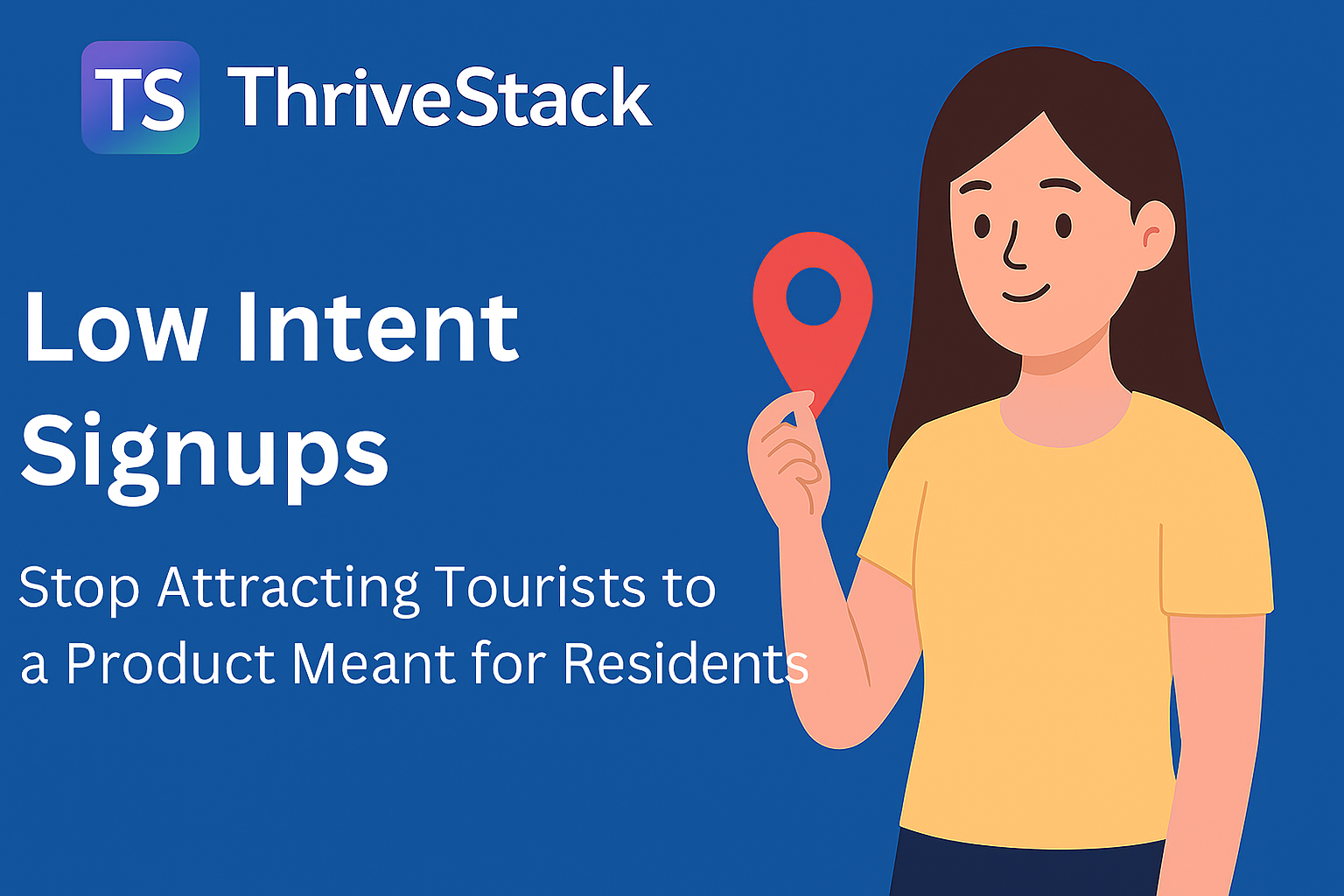"We got 1,000 signups last month… but barely 10 stuck around."
The Leak: Low Intent Signups
You ran the campaign. You got the signups. And yet—most new users vanished within days.
This is the Low Intent Leak. It happens when traffic is high, but the why behind signups is weak.
Maybe your offer was too broad. Or the CTA promised something your product couldn’t deliver. Either way, your funnel is now full of tire-kickers.
Why It Matters: The Business Impact
- Misleading Metrics: Vanity signup spikes make you think campaigns are working.
- Low Activation Rates: These users stall right after login.
- Churn Risk Skyrockets: They were never serious to begin with.
- Wasted Sales & CS Effort: Teams chase ghosts, not growth.
"Good marketing gets signups. Great marketing gets qualified signups." — Andrew Capland
"Every low-intent signup adds noise to your funnel. If you’re not filtering early, you’re wasting everyone's time." — Yaakov Carno
"Fixing activation often starts upstream—with how you acquired the user." — Kate Syuma
What Causes This Leak?
- Overpromising CTAs: Your ad sounds like magic; the product doesn’t.
- Broad Audience Targeting: You hit volume, not fit.
- Freemium Abuse: Free attracts curiosity—not commitment.
- No Qualification Layer: Every email = an account, no filters applied.
What to Measure

- Activation Rate by Source: Who actually engages after signup?
- Trial-to-PQL Ratio: Are these users even hitting product milestones?
- Signups with No Usage: How many vanish after day 1?
- Conversion to Paid by Channel: Who’s bringing the buyers?
How to Fix It
- Refine Your Offer: Be specific. Tell them exactly who it’s for.
- Add Friction: Yes, really. Slight friction filters out noise.
- Use Intent Signals: Website behaviors, enrichment, form fills.
- Gate Entry with Purpose: Ask key questions before letting them in.
- Re-score Leads Post-Signup: Requalify after usage kicks in.
ThriveStack Solution: How We Help
With ThriveStack:
- Correlate signup behavior with post-signup activation and retention
- Segment by intent signals—from UTM to in-app events
- Identify which campaigns bring buyers vs browsers
- Use automated filters to catch fake, spam, or abusive signups
- Alert you on high-churn signup sources before they hit your CS team
How to Find This Leak With ThriveStack?

- Enable ThriveStack Acquisition Analytics — See signup trends by channel and quality.
- Track Activation and Conversion per Campaign — Connect marketing to monetization.
- Use Intent-Based Scoring Models — Built in, based on your product milestones.
Conclusion
Low-intent signups aren’t just a leaky funnel—they’re a costly distraction. They inflate your numbers but deflate your momentum. The fix isn’t just in onboarding. It starts at acquisition, with better targeting, stronger filters, and real-time intent tracking.
ThriveStack helps you stop the noise before it starts.
From identifying high-churn sources to scoring real engagement, our analytics platform brings clarity to your customer acquisition process, so you stop attracting tourists and start building for residents.
Stop burning budget on bounce-prone users. Start acquiring customers who stay.
Request a ThriveStack Demo Now
FAQs
1. What’s a sign of low-intent traffic?
High signup count, low usage after day 1. Especially if it’s channel-specific (e.g. from giveaways or ad blasts).
2. Should I reduce signup volume to improve intent?
You may need to. It’s better to have 100 qualified signups than 1,000 empty ones.
3. Can I recover low-intent users?
Sometimes. Use onboarding personalization and nurture flows—but start with prevention.
4. How does ThriveStack help with this problem?
ThriveStack connects acquisition metrics with retention outcomes—so you know exactly which campaigns bring long-term users and which bring bounce-prone tourists.
5. Is ThriveStack easy to implement with our current stack?
ThriveStack integrates seamlessly with your existing tools, tracking UTMs, product usage, and CRM data without disrupting workflows.

